The Black Russian Terrier (BRT), commonly known as Black Terrier or "KGB dog" is quickly gaining popularity in Europe and North America.
This large Russian dog definitely represents one of the top Russian dog breeds. Its majestic black beauty and well-muscled, large-boned frame inevitably attract high attention at any national or world dog show.
At the same time, Blackie is one of the best choices in a search for a perfect working/companion dog.
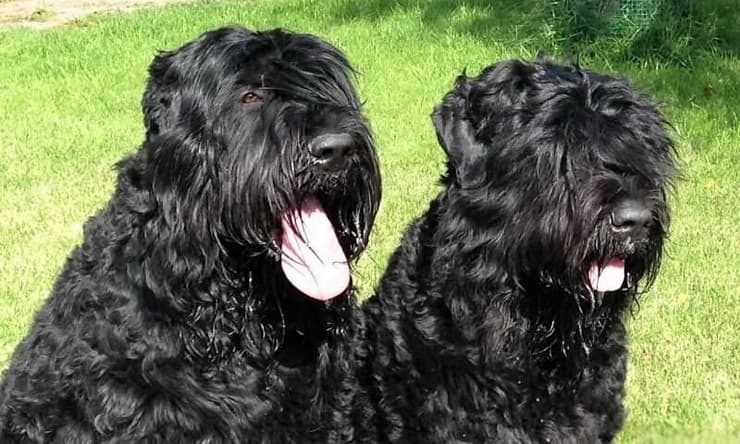
The Chornyi Terrier ("chornyi" being "black" in Russian) is a Soviet dog that has originated in the former Soviet Union entirely from the planned breeding. This young dog breed was created after the Second World War by breeding kennels of the Red Army for military and police purposes. The military wanted to have a large and trainable guard dog that could withstand Siberian frosts and didn't require any special treatment and grooming. As the base stock, they selected the Giant Schnauzer, Airedale Terrier, Rottweiler, and the Russian Newfoundland.
The Use of the Black Russian Dog
The first Black Terriers were utilized as guard dogs in Russian prisons and also as versatile army and police dogs. Although the breed showed good sharpness, robustness, and maneuverability, it nevertheless proved to be unsuitable for service purposes. Blackie builds a close bond with his owner and therefore finds it difficult to deal with changing masters. Also, this dog being a late bloomer took too long to be fully operational mentally and physically.
As a result, the Russian army and the KGB soon stopped breeding Black Terriers for their needs.
Civilians were allowed to own some of the puppies in the late 1950s when the commercialization of the new breed started. Since then, the breed has been bred primarily with the aim of family suitability.
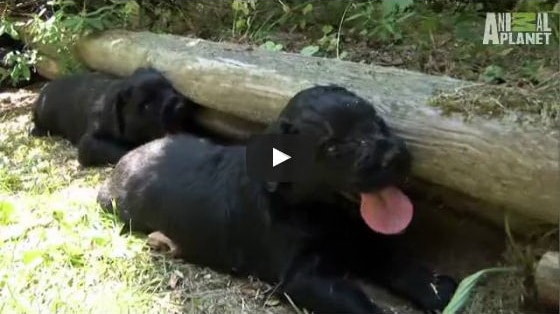
After the collapse of the Soviet Union more and more Blackies were brought to the West by Russian migrants. The international breed standard was established only in 1996 by the World Canine Federation, followed by Kennel Clubs of Great Britain, Canada, and the US.
Appearance
The Black Russian Terrier stands far from the habitual image of a terrier and looks much more like the Schnauzer type. It is larger than average and has a massive bone structure and powerful muscles.
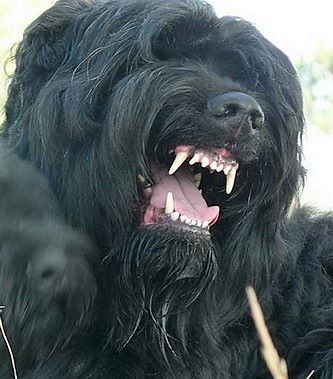
The head is long with a flat forehead. The bridge of the nose runs parallel to the skull line and the muzzle is impressive. A mustache and a beard give the muzzle a rectangular, blunt look.
The eyes are small and oval. The hanging ears are set high, are small and triangular. The hull is strong. The limbs are straight, muscular, and have strong bones. The tail is set high and is quite thick.
The double coat is dense and has a rough texture. It is normally of black color, slight gray mixed parts are allowed.
Black Russian Terrier Size:
Height: 26 to 30 inches, males about 29, females about 27 (68 to 76 cm)
Weight: 90 to 130 pounds, males and females (40 to 60 kg)
Black Terrier Temperament
Another name for this black Russian dog is Russian Pearl, given to it in the West not only for its appearance but for its rare working abilities. This breed inherited the best features from its ancestors and unites the energy and mobility of Schnauzer, cleverness and upbeat nature of Airedale, strength, and courage of Rottweiler, and firmness of Newfoundland.
The Black Russian Terrier is a self-confident dog that at the same time has a calm and amiable nature. He is always attentive and ready to defend himself or his family. However, he calms down quickly when he no longer classifies the situation as dangerous. Blackie never shows unfounded aggressiveness. He is a well-balanced dog with good nerves.
BRT is extremely efficient and reliable and makes an excellent watch and guard dog, alongside other Russian guard dogs (Caucasian dog, Central Asian dog, Russian Sheepdog, Moscow Dog, and Russian German Shepherd). He is wary of strangers and extremely attached to and protective of both family and property.
Blackie is good-natured when it comes to dealing with people. As a working dog, he learns quickly and shows an excellent understanding. Despite his dignified appearance and imposing physique, he possesses a very affectionate nature and is loyal to his owner. He is always ready to play and to run outside.
You may also like:
The Black Terrier is not a kennel dog. He needs the closeness of his owner, his family, his pack. He's not malicious or aggressive. What he does and is supposed to do is he warns the oncoming stranger with hums and growls: stay where you are until I know that you are not dangerous.
It's not a lap dog either, neither by his size nor by his behavior. Blackie has the temperament and he wants to be respected.
Blackie is normally loyal to other home pets but can be tough towards other dominant type dogs. Although he no longer belongs to the terrier group, BRT still has a strong hunting instinct and can start tracking a small prey.
His independent nature enables him to stay alone without suffering from it. However, as a puppy, this black Russian dog still needs to get used to the schedule of his owner's absence.
BRT puppies are open-minded, curious, and very docile. They should be brought up with a lot of love, and unnecessary harshness is not appropriate with them. Blackies grow up very late, they need enough time to develop. Usually, the natural protective instinct awakens in the Black Terrier when he's about two years old.
Blackie only barks a lot in exceptional cases, and his barking allows him to deter any intruder.
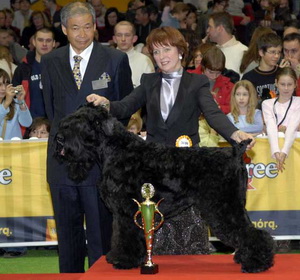
Health Concerns
Russian Terriers are generally healthy and can live as long as 10-14 years. It is a very robust and resistant dog. Some of them are still prone to hip or elbow dysplasia, as well as ear otitis.
To prevent hip dysplasia (HD), serious BRT breeders are subject to strict control regarding the selection and approval of their breeding dogs. A lot depends on the future living conditions of the dog and care from the owner because HD is not exclusively a genetic problem.
Owning a Black Terrier
Owning a Russian Pearl may become a challenge. This black Russian dog is naturally dominant and needs an experienced master, especially for males. Therefore, he is not suitable for first-time dog owners.
Blackie always tends to be a one-person dog, and though he loves children it's not recommended to leave him with kids alone. Early socialization and obedience training is very desirable. On the other hand, a well-trained Black Russian Terrier is absolutely controllable in any situation.
BRT is an easy-to-train dog, but only if he is trained by an experienced owner who knows how to combine rigor and gentleness. This dog can be very stubborn, and you should be coherent and patient in dealing with him.
This dog likes all kinds of activities - from guarding to agility, from bite training to search for traces. He needs regular opportunities to release his energy in order to maintain his physical and mental balance.
Blackie's great advantage is that he is an unpretentious dog that can easily adapt to all living and weather conditions.
Conclusion
The Black Russian Terrier is a versatile dog that can be kept both as a guard and as a companion and can take part in many dog sports. It is a fairly dignified and confident dog for an experienced owner that always knows how to behave appropriately. He is active and can easily adapt to a wide variety of situations.
Breed Names: Russian Terrier, Black Terrier, Russian Black Terrier, Black Russian Terrier, Russian Pearl, Tchiorny Terrier, Chernysh, Russian Bear Schnauzer, Blackie, BRT, Stalin's dog, KGB Dog, Russian: Русский чёрный терьер
Say it in Russian:
Black Russian Terrier Breed Standard
Find a Russian dog name for your Russian Pearl puppy!
Learn some Russian dog commands!

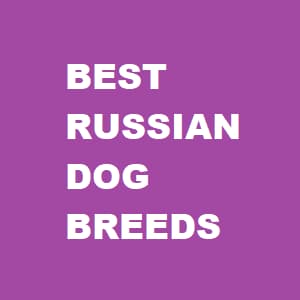
Art says
They used to call it the KGB dog.